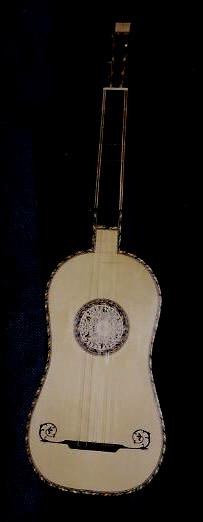THE FRENCH SCHOOL OF BAROQUE GUITAR
| |
It was Luis
Briceño who created an interest in the five-course
guitar in the second quarter ot the XVII c. with his book (written
in Spanish) in France, "Metodo facil
para aprender la guitarra". French
court music and guitar styles reached many parts
of Europe; in Germany French tablature and French styles were
favored over Italian and Spanish styles.
The following composers published works in a span of one hundred
years: François Martin (1663),
Guillaume-Gabriel Nivers (1666),
Robert Médard (1676), Robert
de Visée (1682-1686), Nicholas
Derosier ( (1694) and François
Champion (1731).
Other sources found in
other parts of Europe include: François
Le Cocq (Brussels 1729), Count Logy
von Losinthal (Prague) and a collection of solos, songs,
and ensemble pieces by Nathaniel Diesel in Copenhagen (1736-1744). |
|
The most
important composer in France was Francesco
Corbetta who made an impact in the court of King Louis
the XIV in Paris. He left to England in the 1660's to serve King
Charles II who also played guitar and was a great admirer of Corbetta.
In 1670 he returned to Paris to serve the king, and made a change
from Italian to French tablature, and found that a "French
School" of players and composers had developed in his abscence.
After his death he was replaced by his most famous pupil
Robert
de Visée |
|
|
Francesco Corbetta (1615-1681)
a native of Pavia Italy, was the most renowned guitarist of his age. He lived
in France and Italy, traveled to England and occupied important posts in the
court of Carlo II Duke of Mantua, were he was exposed to important musical
figures of the time like Jean Baptiste Lully (court ballet composer). He dedicated
his first book "La Guitarre Royale"to
King Charles II and this is his largest works filled with extended suites
and complex character pieces, many of them dedicated to members of the English
and French nobility.
The second collection is dedicated to Louis XIV and
includes some extraordinarily chromatic guitar duets and solos mostly in the
strummed style. This was apparently Louis’ favourite sort of music,
for when Louis was in residence at Versailles he heard guitar music in his
bedchamber every evening (except Saturday) as a way to wind down before going
to bed. These private concerts were given by a variety of guitarists; among
them Bernard Jourdain de la Salle and Robert de Visée.
Once the guitar fad began to sweep
over Europe in the late 1600's nearly every crowned head in Europe knew a
few chords and had a guitar virtuoso as personal teacher. Francesco Corbetta's
list of students include: The Duke of Mantua- Carlo II, Philip IV of Spain,
Archduke Leopold Wilhelm of Austria, Duke Gerge Willian of Zell at the Hanover
Court, Charles II of England, James, the Duke of York, Henrietta Anne, the
Dutchess of Orleans and Louis the XIV in France.
Folias-Corbetta
CD Sonate al Pizzico Italian Duets for Plucked Strings
"La Guitarre Royale" for Two Guitars-Guige"cherie au Roy" by Corbetta.
Eric Bellocq and Massimo Moscardo
| |
Robert
de Visée (1660-1724)
A
guitarist , theorbo player, singer and composer, Visée
was born in 1660 and died in Paris after 1720. De Visée's
first printed book "Livre de Guitarre
dédié au Roy" (1682) contains eight
suites with the last one using a new scordatura for the guitar,
plus a separate chaconne in F. The second book "Livre
de Pièces pour la Guitarre" (1686) contains
four suites plus five miscellaneous pieces. There are a number
of pieces for guitar and therobo in lute contemporary manuscripts,
and a 3e "Livre de Pièces
pour la Guitarre"(1689) is mentioned by Fétis,
but its existence is questionable. Other manuscripts contain
arrangements of pieces by Lully, Forqueray and Couperin.
He
served as chamber musician to Louis XIV, and in 1709, was appointed
singer in the royal chapel. In 1720 he succeeded L. Jourdain
de la Salle as guitar-teacher to the king and the following
year he was succeeded by his son François. There are
no traces to be found after 1720, the date of the marriage of
his son.
De Visée's
music is very polished and refined, it epitomizes the elegance
and sophistication of the time. His works are arranged in suites
of different keys and among them are many for guitar duos and
trios, and for a five course guitar with an extension of seven
open basses. His music should be considered at the top of the
list for guitarists wishing to explore the French school of
baroque guitar.
|
|
A tablature piece by Robert DeVisée.
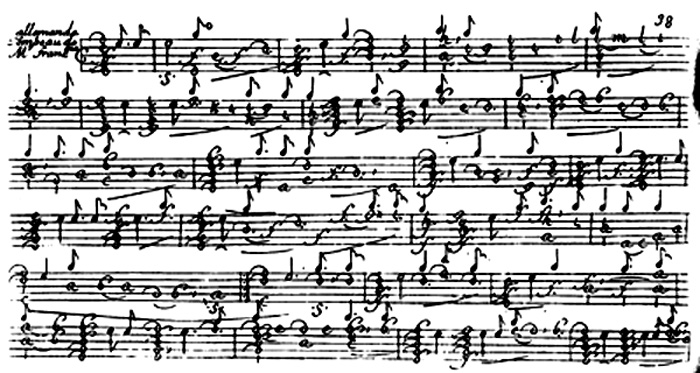
The same piece transcribed to ordinary notation
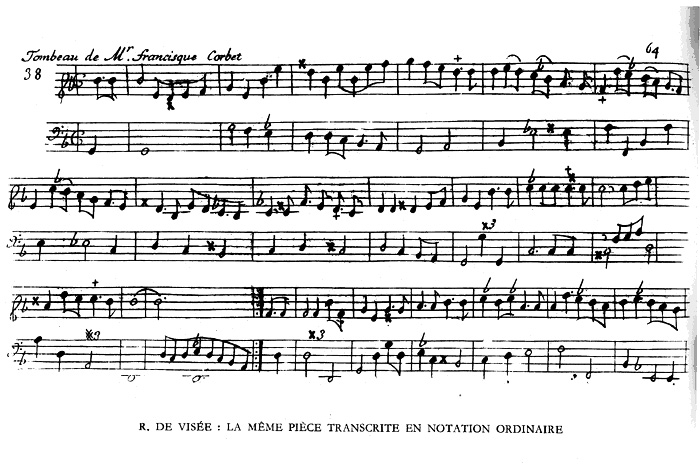
Prelude from Suite in Gm by Robert de Viseé- Theorbos
Two other composers who published works worth mentioning
are Remy Medard "Pieces pour le Guitarre"
(1676) and François
Champion "New Discoveries on the Guitar" (1705).
Accompanying
| The guitar's role as an accompaniment instrument is evident
from the first moments of the Baroque. From the Italian publications
of Italian homophony in the first half of the XVII century, one
finds the obligatory alfabeto letters above the melody to facilitate
strumming. Montesardo, Kapsberger, Falconeri
and Vitali, all included alfabeto chords over the basso continuo
line in their vocal publications |
|
| For modern guitarists first rate ensemble
repertoire is limited, but the Baroque guitarist was as much a part
of ensemble playing as the harpsichord or organ with a substantial
repertoire to choose from. Corbetta, Granata,
Matteis, Doizi de Velasco, Campion, Sanz and Murcia, wrote eloquently
on the figured bass and the art of accompaying. |
|
Dance and Theater in France
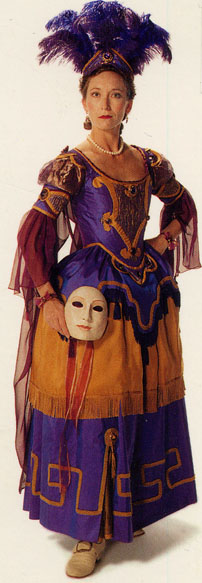 |
In France as in Italy we find an extensive repertoire of dance inspired pieces like corente or courant, allemande or allemanda, balleto or brando etc. these were not intended for dance accompaniment.
The guitar was at the center of the French danses a deux. From the early 1700's these dances were choreographed and rolled off the press by Raoul-Auger Feuillet in Paris, they were the rave among the high classes. In Murcia's books we find charts much like the fake books of today with instructions for guitarists who played at these functions.
The guitar also apperas in operas and ballet orchestras, specially in the productions of Jean Baptiste Lully were Corbetta is said to have lead an ensemble of guitarists for the "Ballet de la galanteries du temps in 1656.
Robert de Visée transcribed many works of Lully and these compositions were played well into the 1700's as far away as California and Mexico as illustrated by the fake books and anthologies found in the New World. |
Sarabanda por la B by Francesco Corbetta
Folias per la X by Corbetta and Foscarini
Kapsberger Ensemble-Rolf Lislevand |
| http://www.baroquedance.com/ |
|
A section of Feuillet's catalogue and Murcia's settings to the danses a deux
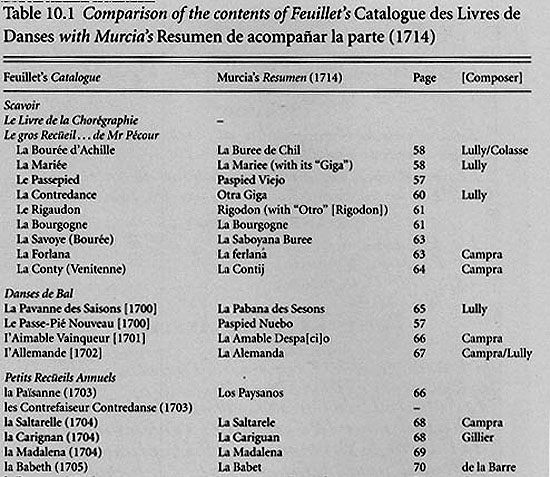
© 2006 Patricia A. Dixon
back


